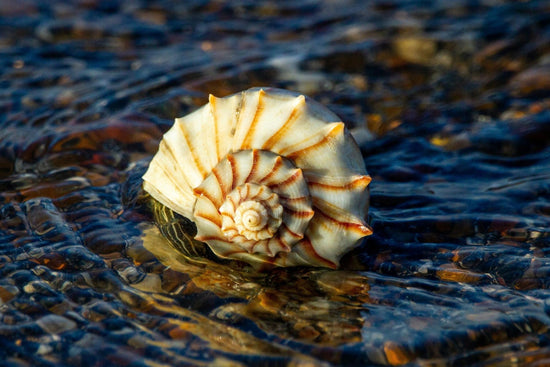Candles are a timeless household staple that have long been a part of our daily lives as both necessity and as luxury. We love candles for their soft, warm light, and in some cases, their pleasant fragrance. But perhaps you've wondered how long candles have been around, or what kinds of things they can be made with. What exactly constitutes a candle and how do they work? If you’re curious about candles, we have answers that will enlighten you!
In this article:

What Are Candles, Exactly?
Candles are essentially any piece of solid, flammable fuel combined with an ignitable wick. This means that while candles are typically made from some kind of wax now, they don’t have to be. Candles can be (and have been) made from solid fats as well, such as tallow. Anything solid that melts and can maintain a steady flame can be used as a candle.
A Short History of Candles
The word “candle” comes from the Latin word “candele,” a conjugation of the verb “candere,” meaning “to shine.”
Candles have been used for at least 5,000 years. Their origin is often attributed to the Egyptians, who created "rushlights" by soaking reeds in animal fat. Rushlights, however, had no wick, making them more akin to a torch than to the candle as we know it. In ancient Rome, they dipped rolled papyrus repeatedly in rendered animal fat or beeswax, and the papyrus served as the wick.
Rather than focus on who made candles first, it may be necessary to understand candles as having been created by many different people, all across the world at different times, using available fuels. In India, a plant-based wax was obtained by boiling the fruit of the cinnamon tree. In Japan, wax was extracted from a kind of tree nut. In China, early candles were made from wax collected from insects. They were molded in paper tubes, and used rolled rice paper as a wick.
Early European societies continued to rely on animal fat candles, which produced a smoky flame and were often foul smelling. Beeswax candles were introduced during this time, but were so expensive that most people couldn’t afford them for home use.
In the 19th century, paraffin was introduced. This was a wax extracted from petroleum. Paraffin was odorless and burned more cleanly than animal fat candles, and was inexpensive to produce. Fortunately, these days we have a wide variety of waxes to choose from, so we don’t have to rely on petroleum products for our candles.
Types of Candles

Candles come in a wide variety of shapes, sizes, and intended function. The following list covers only some of the types of candles available!
-
Taper Candles
-
Pillar Candles
-
Votive Candles
-
Tealight Candles
-
Container Candles
-
Floating Candles
Kinds of Wax

Candle manufacturers have a wide variety of waxes to choose from these days! Each kind of wax comes with benefits and drawbacks. Here are some of the most popular kinds of wax used in candle making:
-
Paraffin Wax
-
Beeswax
-
Palm Wax
-
Soy Wax
So... Where Does the Wax Go?
While some wax may drip out of a candle, and some remains in the melt pool, there’s definitely some wax missing after a burn! So where does that wax go? When you light a candle, the wax around the wick first melts, then vaporizes. That vaporized wax is what the candle flame consumes as it burns. When a candle flame is burning steadily with a teardrop shaped flame, it burns very efficiently and almost all of the vaporized wax is consumed!
Types of Wicks

There are a lot of different kinds of wicks used in candle-making, and they have different burn characteristics. Some are better for certain kinds of wax or candle shapes.
-
Flat wicks
-
Square wicks
-
Cored wicks
-
Wood wicks
A Note About Lead in Candle Wicks
Lead was used as a cheap core for cored wicks, helping the wick stand straight. The candle-making industry was instructed to stop using lead wicks, and was allowed to self-regulate. After almost thirty years of self-regulation, lead wicks were formally banned in 2009 and are no longer in use.
How to Use Candles

How you use your candles depends on the shape and composition of the candle. Here are a few tips to make sure that you’re getting the most out of your candle.
Trim the Wick
Your candle wick should be trimmed to ¼ inch each time you use it. This is true for both wooden and cotton wicks. Cotton wicks can be trimmed with a specialized wick trimmer or a pair of scissors. Wood wicks can also be trimmed using a wick trimmer, and sometimes you can even just pinch off the excess with your fingers. Trimming the wick gives you a cleaner burn and a brighter flame.
Burn for the Correct Amount of Time
Container candles need to be burned until the pool of melted wax stretches all the way to the edge of the candle. Otherwise, your candle could tunnel, creating a deep depression in the candle surrounded by unmelted wax on the sides. This not only makes the candle harder to light, but it can cause drowned wicks, where the wick becomes covered by melted wax from the sides of the candle.
Choose Multiple Wicks
Candles with multiple wicks tend to melt the surface of the candle faster, meaning that you have to burn for a shorter amount of time to get your melt pool across the entire candle. Multiple wicks will be essential for proper burning of some very large candles.
Burn Your Candles Away From Drafts or Fans
Moving air near your candle, such as from open windows or fans, can cause the candle to burn unevenly, and can also cause the candle to burn less cleanly, resulting in soot marks on your candle container.
Benefits of Candles

Emotional Benefits
Both the soft glow and the aroma of scented candles can help improve mood. The glow of a candle flame can be calming, reducing cortisol levels, and the smell from scented candles can elevate mood, as shown by a very small Japanese study; the study conducted on 12 participants showed that scented candles not only improved mood, but also normalized neuroendocrine hormone levels and immune function.
Improved Sleep
Electric lighting has only been common in our homes for the last hundred years or so. Prior to that, we relied on sunlight and various forms of firelight. So we evolved to start winding down to sleep with the coming of sunset and then with indoor firelight. Both of these sources of light contain far less of the blue portion of the light spectrum (this is why they appear yellow and red to us).
Exposure to low-color temperature light (this is light in the yellow-orange-red color spectrum) has been shown to increase the release of melatonin, reduce insomnia, and improve the quality of sleep. Lack of sleep is linked to all kinds of health problems, including increased risk of heart disease, diabetes, heart failure, and stroke. It can also exacerbate depression and obesity, and impair your immune function.
Note: NEVER sleep with lit candles in your home.
Aesthetic Benefits
If you think a candle is beautiful, if it smells good to you, there are benefits to that. There’s research that indicates that being in beautiful spaces promotes good social and mental health, potentially mediating the impact of some mental illnesses and promoting more community-focused thought and behavior. Both of these aspects of beauty also promote better physical health. So creating an environment, even an indoor environment, that you find beautiful makes you healthier. If you find candles beautiful, then you should use them.
The Benefits of Ritual
Candles and other sources of firelight have long been used in prayer and meditation. The benefits of meditation are tremendous, and more research is coming out about them even today. But even if you’re not one for prayer or meditation, establishing a ritual can have the same benefits.
Rituals, in the sense of mindful habits, help provide structure to our lives. They also can help us feel more grounded in a world that is in a constant state of change. Both of these can help us feel calmer. If you light a candle and let it burn for an hour or two before bed, this is a calming ritual, and it allows you to harness these benefits.
Are Candles Safe?

Burning anything will produce some smoke, release some particulate matter, and release volatile organic compounds into the air. A 2007 study found that while paraffin candles can release toxic chemicals into the air, that no candle wax released enough compounds to negatively impact human health. If you want to reduce your exposure to these toxic chemicals, choosing a beeswax or vegetable based wax (such as soy wax) will help with that.
Fragrances can also cause problems, such as asthma, headaches, and some more severe problems. In order to ensure that your exposure to these is minimized, choose unscented candles, or candles made with essential oils instead of artificial fragrance oils.
Do not burn candles next to drafts or fans, as this can cause the flame to burn less efficiently, increasing the amount of smoke and other compounds released by the flame. However, you should also ensure that the room in which you’re burning candles is well-ventilated.
To avoid fires, always burn candles on or in a flame-proof candle holder. Ensure that the candle is on a stable, level surface, and make sure that any lit candles are out of reach of children and pets. Never, ever sleep with lit candles in your home. Do not leave lit candles unattended.
Removing Candle Wax

When you’re burning candles, eventually some wax will spill or drip. So how do you clean these drips and spills?
Removing Wax from Wood
When removing wax from wood, you want to be gentle so as to not mar the finish. Harden the wax with an ice cube, and then carefully scrape away with an expired credit card or other gentle edge. Remove the residue with a cream furniture wax.
Removing Wax from Vinyl Flooring
Warm the wax with hot water or a hot wet towel, and then wipe the wax away with a dry cloth. Repeat until the wax has been removed. Eliminate residue with a multipurpose remover (think Goof Off and other products).
Removing Wax from Carpet
Scrape off the excess wax, and then lay a damp cloth over what remains. Apply heat with an iron set to medium, and let the wax soak into the cloth. Remove residue with a little rubbing alcohol.
Removing Wax from Painted Walls
Use a blow dryer on medium to soften the wax, and wipe it away as it softens. Remove residue using a mixture of one part white vinegar to three parts water.
Removing Wax from Linens or Upholstery
Remove as much solid wax as possible with a thin butter knife. Then, for upholstered furniture, lay a plain paper bag over the top and iron the spot, letting the wax soak into the paper. For linens, such as tablecloths and napkins, sandwich the article between paper bags and iron. Remove remaining stains with denatured alcohol.
Removing Wax from Empty Candle Jars
If you can remember to do it as soon as the candle burns out, the best way to remove excess wax is to pour it out while it's still hot and wipe down the inside of the jar with a textured fabric (scrap rag or paper towel) before washing with soap and warm water.
If your spent candle is sitting at room temperature with a block of wax at the bottom or stuck to the sides, you have two options: You can stick it in the freezer and pop out the frozen wax once it chills, or you can set it right-side up in a pot half full of water to simmer (not boil) on the stovetop. Make sure no water gets inside the containers, we only need it to touch the outside! The simmering water will loosen up any stickers on the outside and heat up the glass, melting all the remaining wax on the inside. Once it's liquid, you can (carefully!) remove the jar with oven mitts and pour it out. Then you'll wipe with a textured cloth and wash with warm soapy water. If you're left with any stubborn smudges, scrub with a dry cloth until they disappear. Friction is your friend!
See also: What to do with your empty candle jars!

Did we cover everything you ever wanted to know about candles? Do you have any other candle questions that you’d like illuminated? Let us know what we missed!






2 comments
This is the coolest candle article ever! So informative and I learned so many new candle facts!!
It’s cool that you explained the different types of candles and their materials. The other day, we noticed how we don’t have a single candle in our home, so my wife and I decided we’d like to use candles to decorate our indoor patio, and we think your article will help us choose the right ones for us. Thanks for the advice on how a candle’s burning time could change depending on its design and material.